Sound leakage in bone conduction headphones using the example of Aftershokz Trekz Titanium
The last question related to bone conduction-based headsets that we would like to answer is a question about sound leakage.
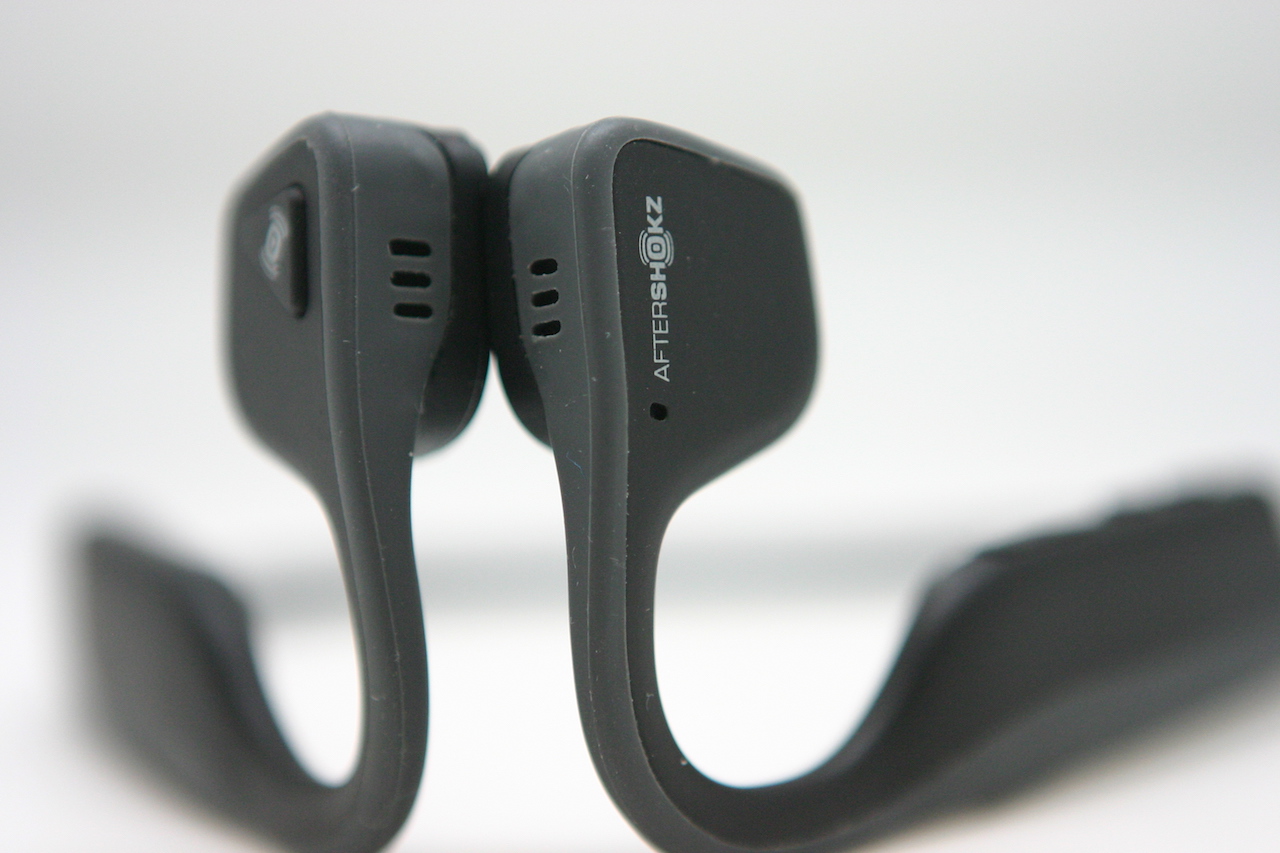
This problem is of concern to many, but for some reason this is strange: when it comes to sound in general, bone headsets are in a hurry to compare everything with ordinary ones, and when it comes to leakage, for some reason not.
In this regard, the first thesis should be voiced: a natural sound leakage is present in all headphones , and the overhead open one - even more so. For example, if you compare any such:

With such:
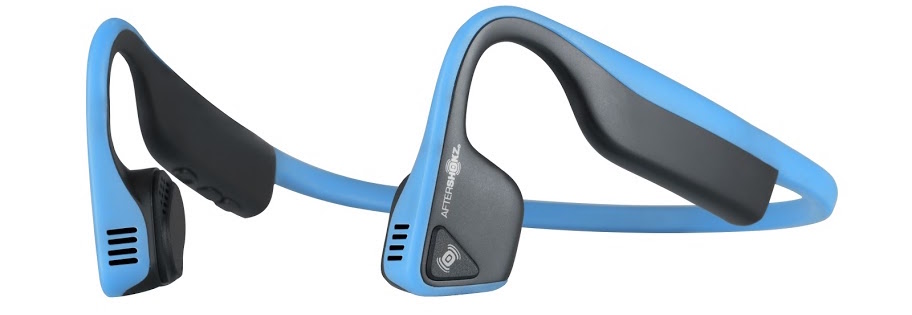
Then in the same conditions, you will hear those and others. Listen to how two pairs of headphones sound at medium volume.
And further:
Here it is necessary to say that some users formulate their claims more specifically: they say, I put them on the table, cut them in full and hear them. Miracles straight. Try raising them in your hand, and surprisingly, the sound will become less distinguishable. In general, it is sometimes necessary to explain how physics works.
Leakage is
Of course, there is a sound leak. But, let's say, Aftershokz headphones can be compared in this parameter with the same ones, because usually a person does not choose between “traditional” headsets and bone ones: if he wants to buy a model based on bone conduction, he will most likely choose within the category.
In the current lineup, the sound leakage problem is solved great, and Trekz Titanium is probably the best in this parameter. If you try to describe in words, then in conditions of not absolute silence at the volume comfortable for the listener, the person who is opposite, will not hear, let alone distinguish what sounds like.
As an example: half the volume in a suburban train and a man sitting opposite. The distance there is not an abyss. And in general, how closely do you let people close to you, to your face, so that they can listen?
Yes, when you cut it to the full, it will be more tangible, but have you never heard the same with other types of “ears”? Sometimes on the whole minibus something is yelling, you turn around, and this is the schoolchildren, they are chasing their fashionable repchik. In other words, the problem is universal.
How is it solved in Aftershokz
Starting with the Bluez 2S model and further - Trekz Titanium company announced the LeakSlayer sound leakage compensation technology. Relatively speaking, the whole secret is in the extra holes on the case.
In the picture this technology looks like this:

The point is quite simple: the sound that forms inside the case is accumulated, accumulated, accumulated and goes in different directions. Listen to the sound of the first Aftershokz headsets:
And now, for comparison, Bluez 2S, where this technology first appeared:
Trekz:
At the same time, the distance to the user is close enough, which in everyday life is rarely achievable without suspicion.
What is the secret of holes.
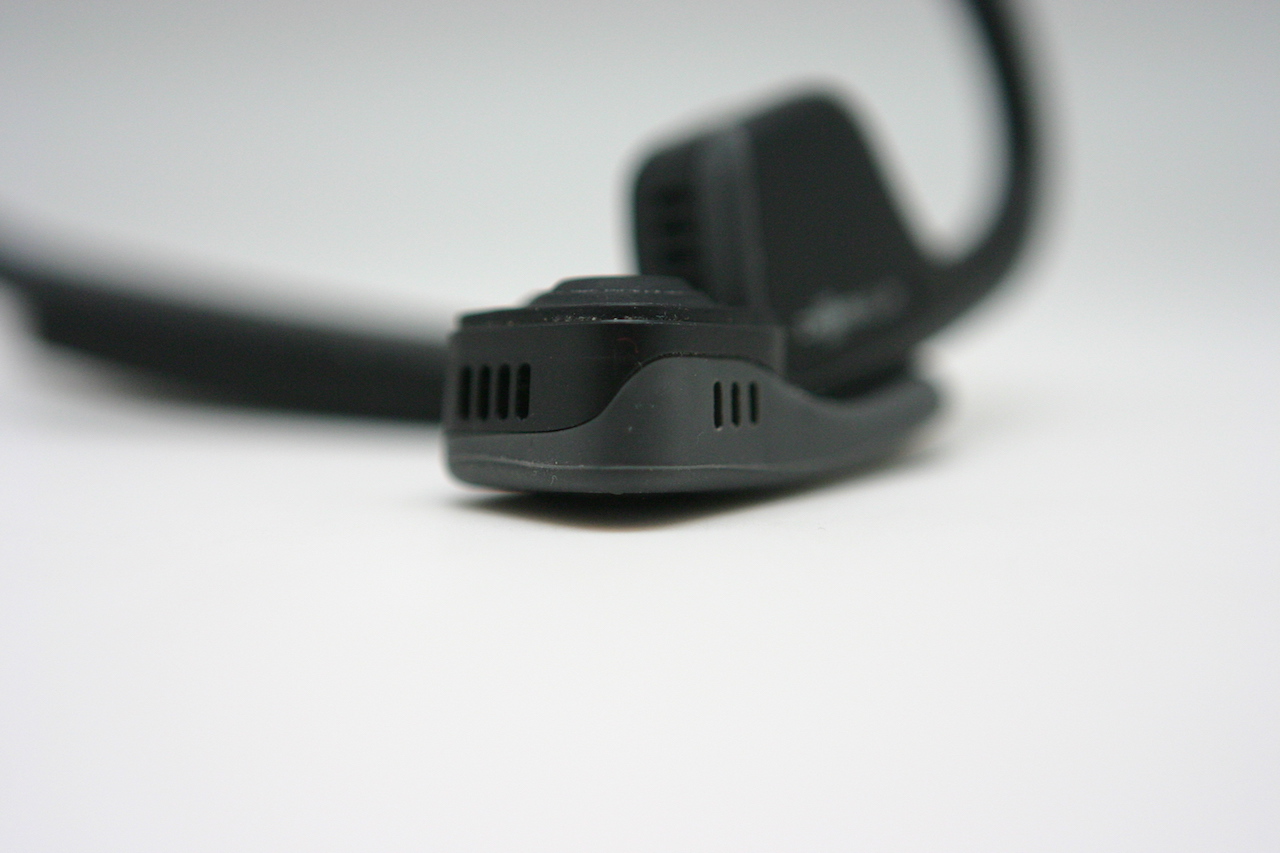
No, they, as it turned out, do not work as a vacuum cleaner in order to “pull in” an extra sound: they simply go against the phase, and thus “0 sounds” are formed.

Thus, the sound leakage that arises because of the headphone case is extinguished, and the only possibility left is to listen to what sounds from the speakers themselves, because it is still still open-type speakers. But, as you can see, now this is all much quieter and quite competitive in relation to ordinary headsets!

Compare how the dynamics of previous, first wireless models looked like:
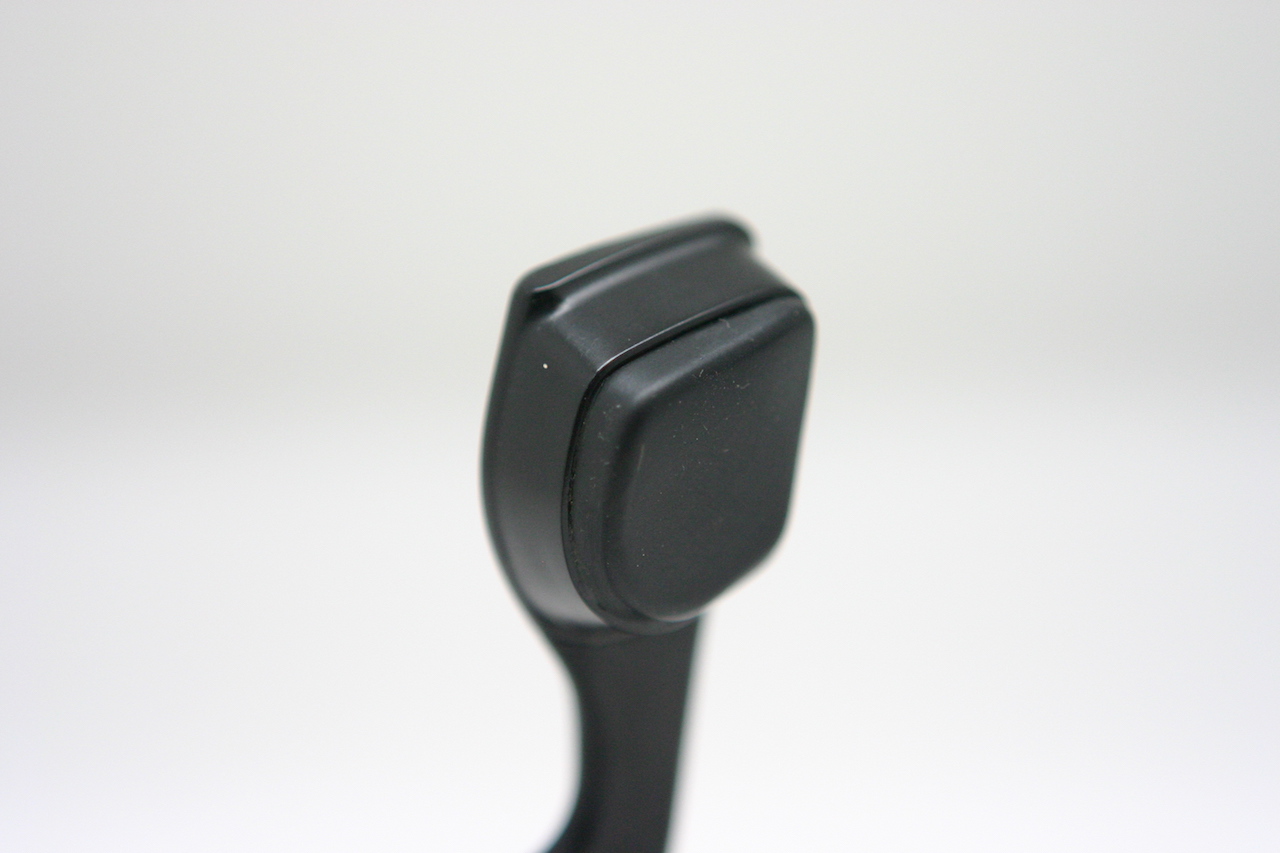
And still for many headsets - this is quite the norm. On Aliexpress, models with holes will have to be searched, but, unfortunately, we don’t know for sure, and not just this particular design without proper functionality - it’s impossible to test everything, unfortunately. However, quite often everything is quite like this:

Or one of the fairly well-known models - headphones KsCat:
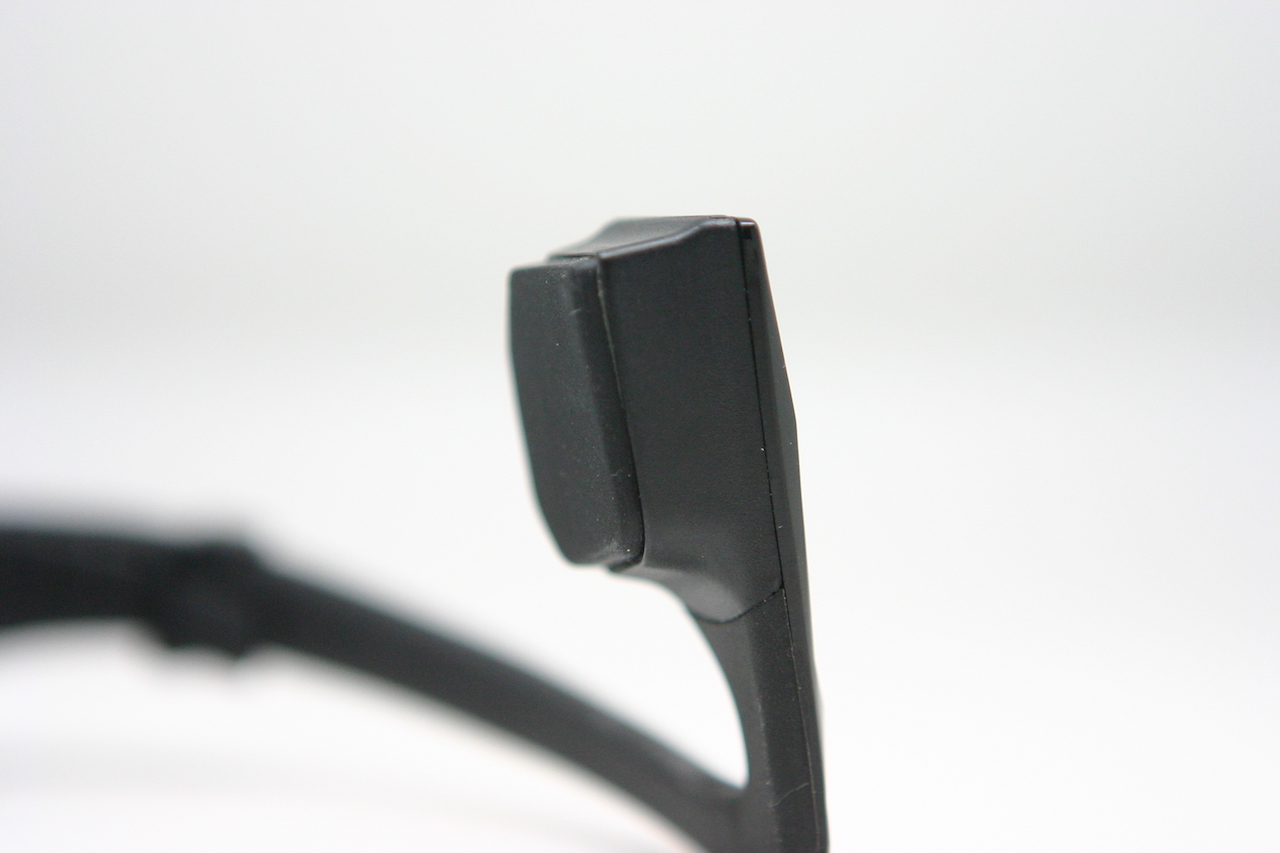
In other words, we want to say that in current models of Aftershokz, Trekz Titanium in particular, an enormous amount of attention was paid to this problem, and the problem of eliminating sound leakage was worked out.
What other reasons can be
Doesn't sound like that? But if you think about it, in these theses there are also seeds of common sense. Of course, first of all, the company continues to position Trekz Titanium as a headset for active people, marathoners and cyclists.
And while it is difficult to imagine a situation when, while running or during a bike ride, someone catches up with you to enjoy your tracks: it sounds quite absurd.
Similarly, as a city headset: you move at your pace along the street, and someone specially adapts to you at close range? Well, someone heard a couple of notes and went on, no more.
Similarly, in your personal car, if you use Trekz as a headset. And so on and so forth.
Much, as it turns out, also depends on musical preferences: a calm instrumental sounds not like Metallica, fortunately or unfortunately. But this is a particular, is not it?
A retreat on sound in general
In today's line of headphones Aftershokz Trekz Titanium, perhaps the best in sound quality. But the sound is different. When headphones with bone conduction sound begin to compare with the "classic", then it is a bit strange.
The sound is different, and “other” in Russian means roughly: “different,” “not the same,” so when they write something like: “hey, they don't sound the same as my senheisers” ... hmm, what Well, this is true. And metal, for example, is not glass. Cardboard is not a tree, etc.
But a lot of things are criticized, probably, on the principle “I did not read, but I condemn.”
For example, the frequency range. If we consider bone conduction on the example of children's toy squeakers, then we know that piezo emitters have features in reproducing low frequencies.
If we listen to the headphone tests from YouTube, then Aftershokz Trekz Titanium, we will begin to distinguish approximately from 30 Hz, and they will subside somewhere around 17000 for us. The bass is there, it does not go anywhere, but we feel the deep bass rather than the hearing, by vibration. This is specific, of course. But this argument: the bass is.
Initially, this was the trick, and according to some, these headphones were created for music lovers who spend a lot of time listening to the tracks so that the bass doesn’t have a negative effect on hearing.
And again, we must understand that in the running mode, in the cycling mode, in the walking mode in the city, we don’t wear headphones to enjoy sounding in the full sense of the word: we use the music in the “against the background” mode. Trekz Titanium is not intended to replace ordinary headphones!
Oh by the way! On the other hand, while walking, the wind in your ears will not whistle, as sometimes happens if the silicone drops are not firmly seated in the ear or the pads do not fit well enough. External interference is reduced to zero, which is critical for the same athletes, whose speed of movement is much faster than a step.
What else. What is important for city headphones is that Trekz has a stable Bluetooth connection, no stuttering is noticed. The gadget runs on a Qualcomm chip CSR8640 .
Design?
As you understand, you will not receive a high-frequency "whistle". However, Trekz are good not only from the inside, but also from the outside.
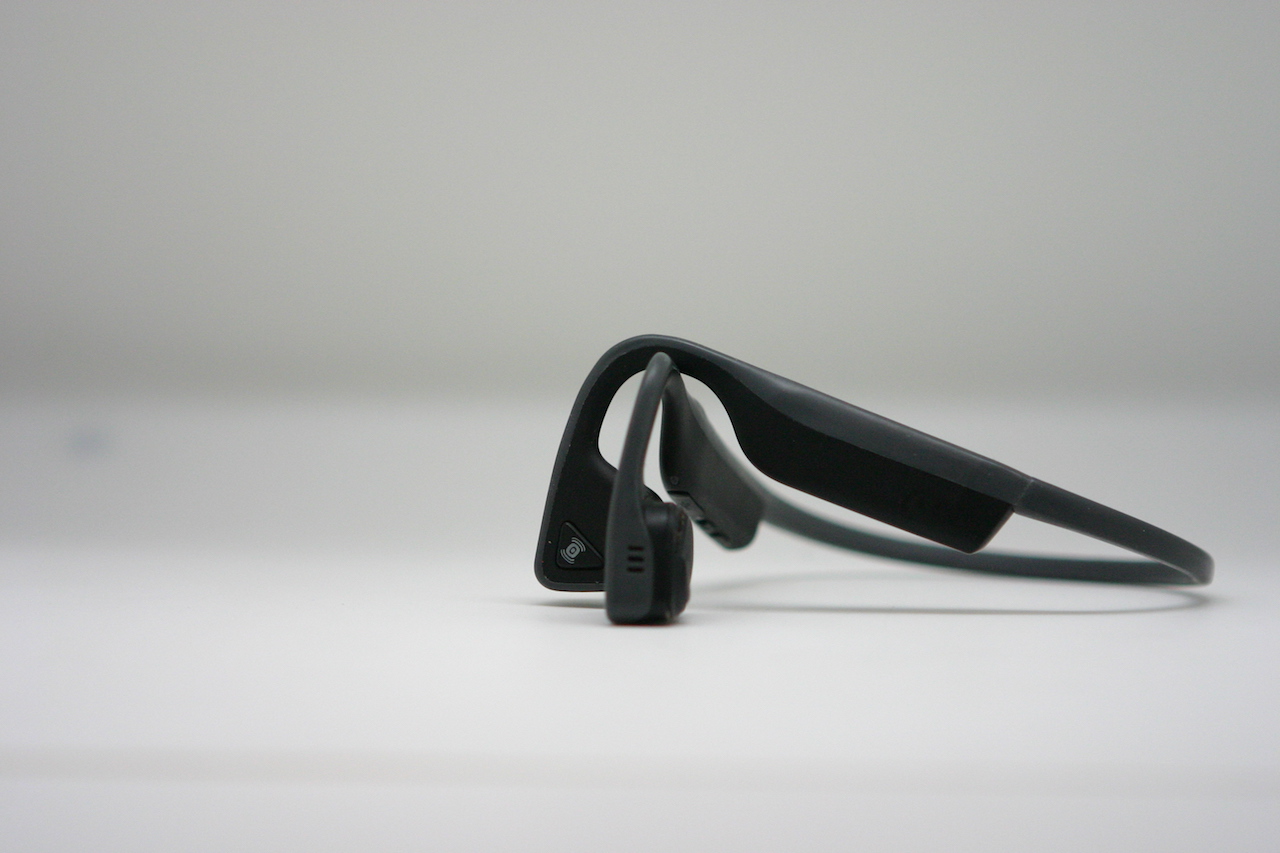
This is a fairly reliable design, which is characterized by flexibility due to the titanium headband and lightness. Several control buttons are placed on the handle: here it is on / off / volume.

And one (pause / play / answer to the call) is integrated into one of the speakers.

Headphones fit perfectly on the head and are universal in size: due to the soft headband, they do not crush. They are also easily compatible with glasses.
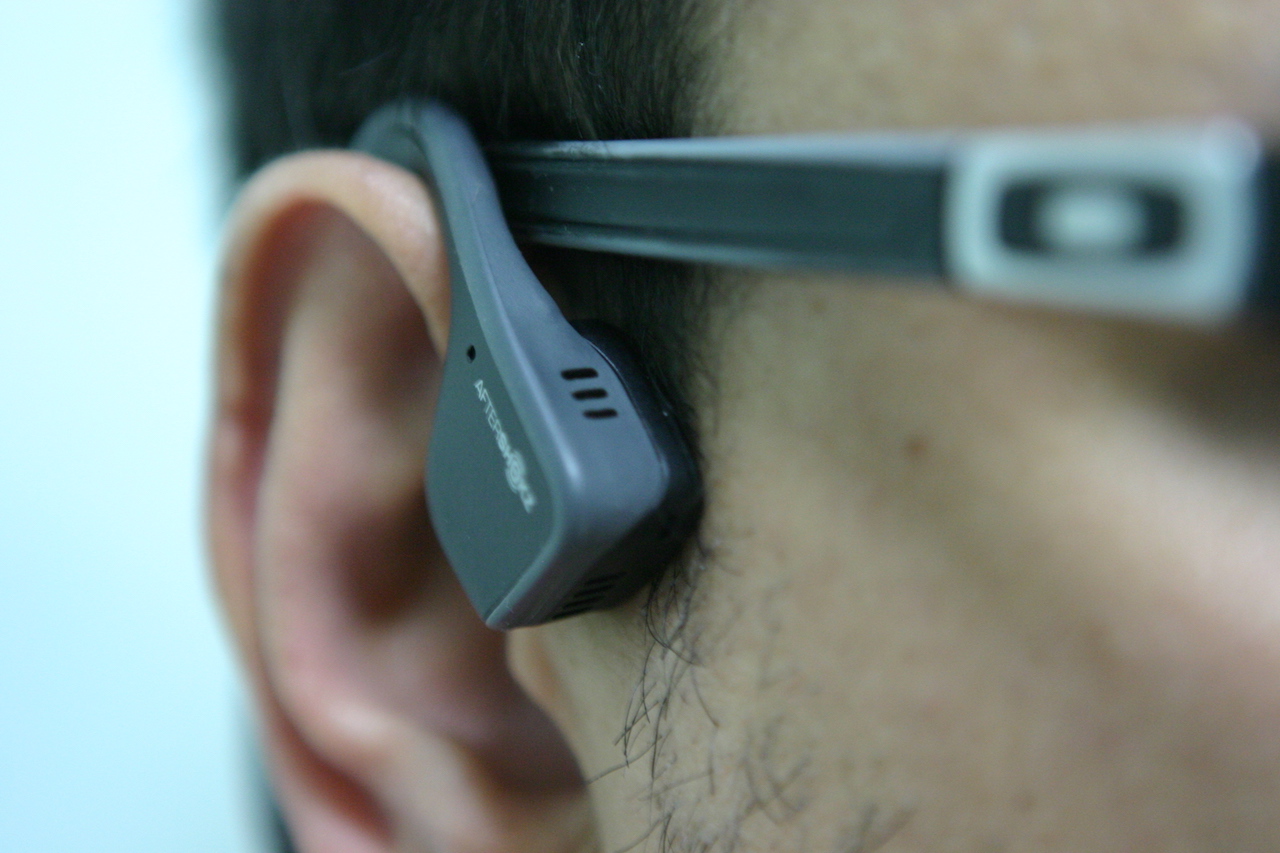
They "sit down" behind the ears, so that the emitter in contact with the bone.

And for those who want to enhance the effect, there is advice to use earplugs. To date, Trekz Titanium in its niche - headset with bone conduction - remain the best model for a number of parameters, including sound characteristics, design features, insulation, and leakage compensation.
The cost of the headset is 8990 rubles , which is essential for any headphones, but for those who are interested in buying and are ready to pay on the site immediately, we offer this model with a discount of 2000 rubles with a coupon: RRIDO7 . He is active until November 19th.
As a short summary:

This problem is of concern to many, but for some reason this is strange: when it comes to sound in general, bone headsets are in a hurry to compare everything with ordinary ones, and when it comes to leakage, for some reason not.
In this regard, the first thesis should be voiced: a natural sound leakage is present in all headphones , and the overhead open one - even more so. For example, if you compare any such:

With such:

Then in the same conditions, you will hear those and others. Listen to how two pairs of headphones sound at medium volume.
And further:
Here it is necessary to say that some users formulate their claims more specifically: they say, I put them on the table, cut them in full and hear them. Miracles straight. Try raising them in your hand, and surprisingly, the sound will become less distinguishable. In general, it is sometimes necessary to explain how physics works.
Leakage is
Of course, there is a sound leak. But, let's say, Aftershokz headphones can be compared in this parameter with the same ones, because usually a person does not choose between “traditional” headsets and bone ones: if he wants to buy a model based on bone conduction, he will most likely choose within the category.
In the current lineup, the sound leakage problem is solved great, and Trekz Titanium is probably the best in this parameter. If you try to describe in words, then in conditions of not absolute silence at the volume comfortable for the listener, the person who is opposite, will not hear, let alone distinguish what sounds like.
As an example: half the volume in a suburban train and a man sitting opposite. The distance there is not an abyss. And in general, how closely do you let people close to you, to your face, so that they can listen?
Yes, when you cut it to the full, it will be more tangible, but have you never heard the same with other types of “ears”? Sometimes on the whole minibus something is yelling, you turn around, and this is the schoolchildren, they are chasing their fashionable repchik. In other words, the problem is universal.
How is it solved in Aftershokz
Starting with the Bluez 2S model and further - Trekz Titanium company announced the LeakSlayer sound leakage compensation technology. Relatively speaking, the whole secret is in the extra holes on the case.
In the picture this technology looks like this:

The point is quite simple: the sound that forms inside the case is accumulated, accumulated, accumulated and goes in different directions. Listen to the sound of the first Aftershokz headsets:
And now, for comparison, Bluez 2S, where this technology first appeared:
Trekz:
At the same time, the distance to the user is close enough, which in everyday life is rarely achievable without suspicion.
What is the secret of holes.

No, they, as it turned out, do not work as a vacuum cleaner in order to “pull in” an extra sound: they simply go against the phase, and thus “0 sounds” are formed.

Thus, the sound leakage that arises because of the headphone case is extinguished, and the only possibility left is to listen to what sounds from the speakers themselves, because it is still still open-type speakers. But, as you can see, now this is all much quieter and quite competitive in relation to ordinary headsets!

Compare how the dynamics of previous, first wireless models looked like:

And still for many headsets - this is quite the norm. On Aliexpress, models with holes will have to be searched, but, unfortunately, we don’t know for sure, and not just this particular design without proper functionality - it’s impossible to test everything, unfortunately. However, quite often everything is quite like this:

Or one of the fairly well-known models - headphones KsCat:

In other words, we want to say that in current models of Aftershokz, Trekz Titanium in particular, an enormous amount of attention was paid to this problem, and the problem of eliminating sound leakage was worked out.
What other reasons can be
- Do not turn on the headphones at full volume
- Use the equalizer
- Keep people out of your face when wearing headphones
Doesn't sound like that? But if you think about it, in these theses there are also seeds of common sense. Of course, first of all, the company continues to position Trekz Titanium as a headset for active people, marathoners and cyclists.
And while it is difficult to imagine a situation when, while running or during a bike ride, someone catches up with you to enjoy your tracks: it sounds quite absurd.
Similarly, as a city headset: you move at your pace along the street, and someone specially adapts to you at close range? Well, someone heard a couple of notes and went on, no more.
Similarly, in your personal car, if you use Trekz as a headset. And so on and so forth.
Much, as it turns out, also depends on musical preferences: a calm instrumental sounds not like Metallica, fortunately or unfortunately. But this is a particular, is not it?
A retreat on sound in general
In today's line of headphones Aftershokz Trekz Titanium, perhaps the best in sound quality. But the sound is different. When headphones with bone conduction sound begin to compare with the "classic", then it is a bit strange.
The sound is different, and “other” in Russian means roughly: “different,” “not the same,” so when they write something like: “hey, they don't sound the same as my senheisers” ... hmm, what Well, this is true. And metal, for example, is not glass. Cardboard is not a tree, etc.
But a lot of things are criticized, probably, on the principle “I did not read, but I condemn.”
For example, the frequency range. If we consider bone conduction on the example of children's toy squeakers, then we know that piezo emitters have features in reproducing low frequencies.
If we listen to the headphone tests from YouTube, then Aftershokz Trekz Titanium, we will begin to distinguish approximately from 30 Hz, and they will subside somewhere around 17000 for us. The bass is there, it does not go anywhere, but we feel the deep bass rather than the hearing, by vibration. This is specific, of course. But this argument: the bass is.
Initially, this was the trick, and according to some, these headphones were created for music lovers who spend a lot of time listening to the tracks so that the bass doesn’t have a negative effect on hearing.
And again, we must understand that in the running mode, in the cycling mode, in the walking mode in the city, we don’t wear headphones to enjoy sounding in the full sense of the word: we use the music in the “against the background” mode. Trekz Titanium is not intended to replace ordinary headphones!
Oh by the way! On the other hand, while walking, the wind in your ears will not whistle, as sometimes happens if the silicone drops are not firmly seated in the ear or the pads do not fit well enough. External interference is reduced to zero, which is critical for the same athletes, whose speed of movement is much faster than a step.
What else. What is important for city headphones is that Trekz has a stable Bluetooth connection, no stuttering is noticed. The gadget runs on a Qualcomm chip CSR8640 .
Design?
As you understand, you will not receive a high-frequency "whistle". However, Trekz are good not only from the inside, but also from the outside.

This is a fairly reliable design, which is characterized by flexibility due to the titanium headband and lightness. Several control buttons are placed on the handle: here it is on / off / volume.

And one (pause / play / answer to the call) is integrated into one of the speakers.

Headphones fit perfectly on the head and are universal in size: due to the soft headband, they do not crush. They are also easily compatible with glasses.

They "sit down" behind the ears, so that the emitter in contact with the bone.

And for those who want to enhance the effect, there is advice to use earplugs. To date, Trekz Titanium in its niche - headset with bone conduction - remain the best model for a number of parameters, including sound characteristics, design features, insulation, and leakage compensation.
The cost of the headset is 8990 rubles , which is essential for any headphones, but for those who are interested in buying and are ready to pay on the site immediately, we offer this model with a discount of 2000 rubles with a coupon: RRIDO7 . He is active until November 19th.
As a short summary:
- Trekz Titanium - good city "raznazadachny" headphones that provide security due to the fact that they do not cover the ears of the owner.
- They are well designed, distinguished by convenient design and intuitive controls.
- They have a decent sound, and the leakage parameter is already comparable with ordinary headsets.
All Articles